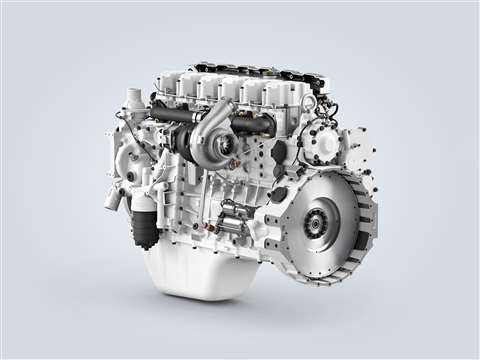Liebherr, Tula team on emissions-reduction research
10 March 2022
Liebherr-Components AG and Tula Technology have presented the results of a joint study on heavy machinery. Together, the companies carried out research on reducing greenhouse gases (GHG) and nitrogen oxides (NOx) produced by heavy-duty equipment. The results were revealed at the International Engine Congress in Baden-Baden, Germany.
Based on simulations, Tula’s diesel Dynamic Skip Fire (dDSF) software allows the reduction of NOx tailpipe emissions by 41% and carbon dioxide (CO2) by 9.5%. For this study, Liebherr Machines Bulle SA provided its D966 engine that operates in a variety of applications, such as mobile or maritime cranes and wheel loaders.
 Liebherr and Tula have cooperated on engine research in which simulations have shown significant emissions reductions from Liebherr’s D966 diesel using Tula’s diesel Dynamic Skip Fire (dDSF) software. (Photo: Liebherr)
Liebherr and Tula have cooperated on engine research in which simulations have shown significant emissions reductions from Liebherr’s D966 diesel using Tula’s diesel Dynamic Skip Fire (dDSF) software. (Photo: Liebherr)
The results of the research could influence the development or manufacturing of off-road equipment worldwide in a positive way, Liebherr said and the company will continue its activities toward designing “proof of concept” hardware for the integration of Tula’s dDSF software into Liebherr engines. The D966, a compact 13.5 L, six-cylinder diesel engine, will also be used in further tests. Liebherr will also consider the integration of the dDSF software into other engines in its portfolio.
“Liebherr is a forward-thinking company focusing already today on the challenges that customers around the world will face tomorrow,” said Ulrich Weiss, managing director for Research and Development of Combustion Engines at Liebherr Machines Bulle SA. “The reduction of greenhouse gases and nitrogen oxide emissions is the goal that we strive to achieve, while continuously improving our engine’s performance.”
In series production since 2018, Tula’s Dynamic Skip Fire (DSF) system incorporates patented algorithms that choose to skip or fire individual cylinders dynamically to meet an engine’s torque demands. This enables near-peak engine efficiency for a cleaner burning, Tula said,as well as proactively mitigating noise and vibration by manipulating the firing pattern and cylinder loading.
DSF has been deployed in more than 1.5 million passenger vehicles to date, Tula said, and the new study adds to the a list of successful applications of Tula’s diesel dDSF technology to passenger cars, commercial vehicles and heavy machinery, the company said.
“At Tula, we are driven by a passion to increase efficiency in engines and motors of all types and also improve the environment,” said R. Scott Bailey, president and CEO of Tula Technology, based in San Jose, Calif. “While there are existing regulations to reduce emissions in off-road machinery and vehicles, more stringent standards are expected within the decade. To comply, equipment manufacturers need solutions like our patented dDSF software to operate engines more efficiently and produce dramatically lower levels of tailpipe emissions.”
STAY CONNECTED




Receive the information you need when you need it through our world-leading magazines, newsletters and daily briefings.
POWER SOURCING GUIDE
The trusted reference and buyer’s guide for 83 years
The original “desktop search engine,” guiding nearly 10,000 users in more than 90 countries it is the primary reference for specifications and details on all the components that go into engine systems.
Visit Now
CONNECT WITH THE TEAM









